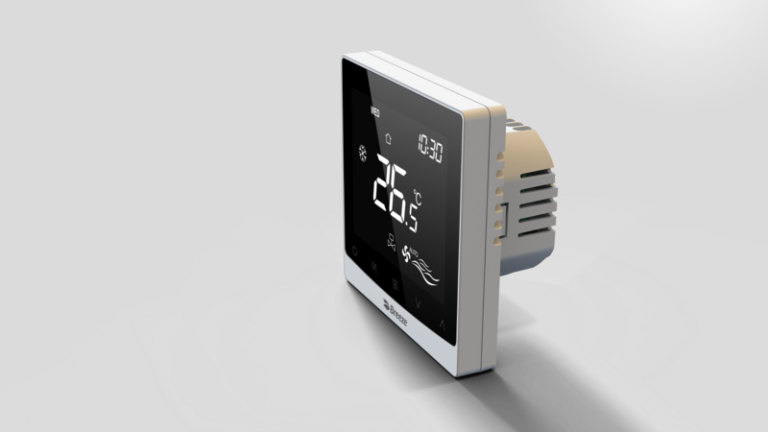How to Replace a Thermostat Battery: A Step-by-Step Guide

Changing a thermostat battery is a simple task that can help ensure your home stays at the right temperature. To replace a thermostat battery, you start by turning off the power to the thermostat, then remove the cover and replace the old batteries with new ones. This quick maintenance can improve the efficiency of your heating and cooling systems.
Many homeowners avoid checking their thermostat batteries, not realizing how easy it is to do. If your thermostat is not responding or it’s showing a low battery warning, it’s time to take action. Keeping your thermostat charged is crucial for maintaining comfort in your home.
Taking just a few minutes to replace the battery can save you from larger issues down the road. By following the steps outlined in this article, you can handle this task yourself and ensure your home stays comfortable year-round.
Understanding Thermostat Batteries
Thermostat batteries play a crucial role in keeping your home comfortable. Knowing the types of batteries and when to replace them helps ensure your thermostat works properly.
Types of Batteries Used in Thermostats
Most thermostats use either AA or AAA batteries. Some models may also use a 9-volt battery. The type you need usually depends on your thermostat’s brand and model.
Refer to your thermostat’s manual to find the correct battery type. You can find batteries at most hardware stores or online. Lithium batteries last longer but can be more expensive. Alkaline batteries are cheaper but may need more frequent replacement.
It is important to choose high-quality batteries. This will help your thermostat perform efficiently and avoid issues.
Determining When to Replace Your Thermostat Battery
You should replace your thermostat battery every 1 to 2 years, but this can vary based on usage. If your thermostat starts to show incorrect temperatures or becomes unresponsive, it’s likely time for a new battery.
Some models have low battery indicators that will give you a warning. Pay attention to this feature to avoid sudden failures.
Another sign that you need to replace the battery is if the display dims or disappears. This often means that the battery is weak and needs changing. Regular checks can help you maintain your thermostat’s performance.
Preparation for Replacement
Before you replace your thermostat battery, you need to gather the right tools and follow safety precautions. Proper preparation will ensure that you do the job correctly and safely.
Gathering the Right Tools
To replace a thermostat battery, you will need a few simple tools. These include:
- Screwdriver: Depending on your thermostat, you may need a flathead or Phillips screwdriver.
- New battery: Check your thermostat’s manual for the correct battery type, usually AA or AAA.
- Flashlight: Good lighting can help you see small parts and connectors easily.
Make sure you have everything ready before starting. You might also want to keep a cloth or small container nearby to hold screws when you remove the thermostat cover. This will help prevent losing any parts during the process.
Safety Precautions and Procedures
Safety is important while working with electrical devices. Here are some precautions:
- Turn off power: Always turn off the power to the thermostat at the circuit breaker to avoid electric shock.
- Use insulated tools: If possible, use tools with insulated handles to protect yourself from electrical currents.
- Check for voltage: If you have a multimeter, check the voltage on the wires to ensure no power is flowing before you start working.
By following these precautions, you can minimize the risk of accidents and ensure a smooth battery replacement. Always take your time and double-check your steps for maximum safety.
Locating the Thermostat Battery Panel
Finding the battery compartment is the first step in replacing the thermostat battery. Most thermostats have a removable cover or a small panel designed for easy access.
To locate the battery panel, check your thermostat’s user manual or inspect the unit closely. Some models require you to slide the cover off, while others may have a small latch or screws securing the panel. If screws are present, use the appropriate screwdriver to remove them carefully.
Once the panel is open, you will see the battery compartment, making it easy to proceed with replacement.
Proper Technique for Old Battery Removal
Removing the old battery is a simple but important step. First, note the battery’s orientation—pay attention to the positive (+) and negative (-) terminals to ensure correct replacement.
Carefully remove the battery by gently sliding or pulling it out. If your thermostat has a tight battery slot, you may need to use a small tool, such as a flathead screwdriver, to carefully pry it out. Avoid using excessive force to prevent damage to the battery connectors.
Correct Installation of the New Battery
Insert the new battery in the same orientation as the old one, aligning the positive (+) and negative (-) terminals correctly. Placing the battery incorrectly can prevent your thermostat from functioning properly.
Once inserted, ensure the battery fits snugly into the compartment. If your thermostat has a battery cover, securely place it back before moving to the next step.
Verifying Thermostat Functionality Right After Installation
After installing the new battery, it is important to confirm that your thermostat is working correctly. Turn the power back on and check the thermostat display.
If the screen lights up and responds to adjustments, the battery replacement was successful. Test the heating or cooling system by adjusting the temperature settings slightly to ensure it activates.
If the thermostat does not respond, double-check the battery’s placement and confirm the power is on. If the issue persists, consult your thermostat manual for troubleshooting steps.
Proper Disposal of the Used Battery
Proper disposal of used batteries is essential for environmental safety. Avoid throwing batteries in regular trash, as they contain chemicals that can harm the environment.
Instead, take the old battery to a designated recycling center or a local electronics store that accepts battery disposals. Many communities offer battery recycling programs to ensure safe and eco-friendly disposal.
By disposing of batteries properly, you contribute to environmental conservation and prevent hazardous waste buildup.
Maintenance Tips for Thermostat Battery
To ensure your thermostat functions efficiently, follow these battery maintenance tips:
- Regular Checks: Inspect the thermostat battery every few months, even if no warning appears.
- Use High-Quality Batteries: Investing in reliable batteries can extend the lifespan and reduce the frequency of replacements.
- Keep the Thermostat Clean: Dust and dirt buildup can interfere with battery connections, so wipe the unit occasionally.
- Set a Reminder: Mark your calendar or set a phone reminder to check and replace the battery annually.
By taking these simple steps, you can keep your thermostat running smoothly and maintain a comfortable home environment year-round.
Conclusion
Replacing your thermostat battery is a quick and simple task that can prevent potential heating and cooling issues. By following the proper steps—turning off the power, removing the old battery, and installing a new one—you can keep your thermostat functioning efficiently. Regular maintenance, such as checking battery life and using high-quality replacements, ensures consistent performance.
Taking a few minutes to replace your thermostat battery not only enhances your home’s comfort but also helps avoid unexpected system failures. With these easy-to-follow steps, you can confidently handle this small maintenance task and keep your thermostat running smoothly year-round.
Frequently Asked Questions (FAQ)
1. How often should I replace my thermostat battery?
Most thermostats require a battery replacement every 1 to 2 years. However, it’s best to check your thermostat’s manual for specific recommendations.
2. What type of battery does my thermostat use?
Common thermostat batteries include AA, AAA, or 9-volt batteries. Always refer to your thermostat’s manual to find the correct type.
3. How do I know when my thermostat battery is low?
Signs of a low battery include a dim or unresponsive display, incorrect temperature readings, and a low battery warning indicator on the screen.
4. Will my HVAC system stop working if the thermostat battery dies?
Yes, if the thermostat is battery-operated, it may stop controlling your HVAC system when the battery dies. Hardwired thermostats with backup batteries will continue working but may lose programmed settings.
5. Can I use rechargeable batteries in my thermostat?
It’s generally not recommended, as rechargeable batteries have different voltage levels than standard alkaline or lithium batteries, which may affect performance.
6. Do I need to turn off the power before replacing the thermostat battery?
Yes, turning off the power at the circuit breaker ensures safety while handling the thermostat.
7. What should I do if my thermostat doesn’t turn on after replacing the battery?
Check that the batteries are installed correctly, ensuring the positive (+) and negative (-) terminals align properly. If the problem persists, try using a different set of batteries or consult the thermostat manual for troubleshooting steps.
8. How can I dispose of old thermostat batteries?
Used batteries should be taken to a recycling center or a store that accepts battery disposal. Avoid throwing them in regular trash to prevent environmental harm.
By keeping your thermostat battery in good condition, you can ensure your home stays at a comfortable temperature without unexpected disruptions.






